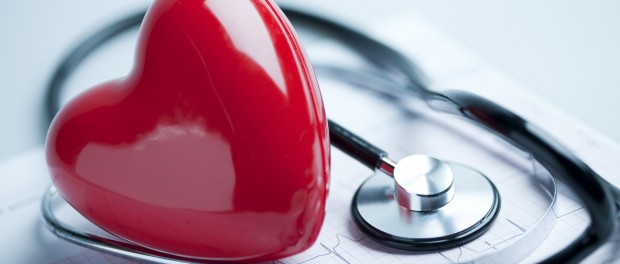Heart Health Primer
Even small steps toward a healthier lifestyle can make a big difference in keeping your heart healthy. This article shows you how knowledge, nutrition, and activity can help you improve your heart health. Along with your healthcare provider’s guidance, this can help you set goals to take better care of your heart.
Heart and blood vessel (cardiovascular) disease
Heart disease includes several problems, some of which are related to the buildup of plaque in the walls of arteries, also known as atherosclerosis. Plaque causes the arteries to narrow, making it harder for blood to flow. When your blood vessels become narrowed and clogged, you may have these problems:
- Angina: a type of pain you may feel in your chest, arms, shoulders or back. The pain may be more intense when your heart beats faster, such as when you exercise. It may also go away when you rest. You may sweat a lot and feel very weak. If you experience chest pain while active, contact your healthcare provider.
- Heart attack: when your heart can’t get enough blood because a blood vessel in or near your heart becomes blocked. During a heart attack, you may have chest pain with nausea, indigestion, extreme weakness and sweating, or you may have no symptoms at all. If your chest pain persists, call 911.
- Stroke: when the blood supply to your brain is blocked. If you have sudden trouble walking, speaking and understanding, paralysis or numbness on one side of your body or face, trouble seeing, or severe headache, call 911.
Other types of heart problems
- Heart failure: when the heart is not pumping as well as it should. Symptoms may include shortness of breath, leg, ankle or foot swelling, rapid or irregular heartbeat, difficulty exercising, persistent cough or other symptoms.
- Abnormal heart rhythms: when the heart beats too fast, too slowly or in an irregular way. The result can be an insufficient amount of blood being pumped to meet the body’s needs. Some abnormal heart rhythms require medical treatment to avoid other complications, such as a heart attack or stroke.
- Heart valve problems: involve the doors between your heart’s chambers. If they don’t close or open properly, blood can leak through or leak backward.
- Peripheral arterial disease, or PAD, can happen when the openings in your blood vessels narrow and your legs and feet don’t get enough blood. You may feel leg pain when you walk or exercise. Some people feel numbness or tingling in their feet or legs or have sores that heal slowly.
Risk factors for heart disease
There are two kinds of risk factors for heart disease: those you cannot change, and those you can.
Risk factors you cannot change
- Age: Your risk for heart disease increases as you age.
- Gender: Women over age 55 and past menopause are at higher risk for heart disease.
- Family history: A family history of early heart disease also puts you at greater risk.
Risk factors you can change
- High blood pressure
- High cholesterol
- Diabetes and prediabetes
- Smoking
- Being overweight
- Lack of physical activity
- Unhealthy diet
- Stress
Living a heart healthy lifestyle
- Get more active. Try to exercise for about 30 minutes, most days of the week. This can lower your blood pressure, raise your good cholesterol level and lower your bad cholesterol level. It also makes it easier to manage your weight, gives you more energy, helps you cope with stress and helps you sleep better. Check with your healthcare provider before you start any physical activity program.
- Aim for a healthy weight. If you are overweight, weight loss can help lower your blood pressure and decrease the burden on your heart and joints.
- Eat a healthy diet. This can help you lower both cholesterol and blood pressure. Trans fats can raise your bad cholesterol level and fiber can help to lower it. Choose more heart-healthy fats, such as olive oil. Bake, boil or broil, rather than fry foods. Choose lean cuts of meat and trim any visible fat. Include fish and poultry in your diet at least a few times a week. Limit high-calorie and high-fat desserts.
Heart health products from your pharmacy
- Home blood pressure monitors: Taking your blood pressure at home can give you the results to help guide your healthcare provider about making changes in your blood pressure or heart medicines, if necessary. Many pharmacies offer a variety of arm and wrist models for home blood pressure monitoring. Most devices use a band (or cuff) that goes around your arm and a digital display for the readings. Automatic arm or wrist blood pressure monitors are easy to use; just wrap the cuff around your arm, press a button and your blood pressure appears on the screen.
- Home blood cholesterol tests: your pharmacy offers products that let you measure your blood cholesterol at home and find out if you are at risk of heart disease in minutes.
- Pedometers: If you walk outside or on a treadmill a lot during your day, check your pharmacy for a pedometer to help you count your steps. Some pedometers also measure distance, time or the number of calories you burn.
- Aspirin: People who are at high risk for a heart attack, or have already had one, may find it helpful to take a daily, low dose of aspirin. This can help prevent blood clots. Ask your healthcare provider if it is right for you.
- Fitness monitors: Check at your pharmacy for heart rate monitors and activity monitors, or you can simply check your pulse to measure your heart rate. When you feel your pulse, count the number of beats in 15 seconds. Multiply this number by 4 to calculate your beats per minute.
- Pulse oximeters: If you don’t have enough oxygen in your blood, you may feel shortness of breath. You can measure your blood’s oxygen level with a small tool called a pulse oximeter that clips onto your finger. It also shows how well your lungs take in oxygen and send it throughout your body.
- Pillboxes: A pillbox can help you organize your medicines and keep you from forgetting to take your daily doses.
Cholesterol
Cholesterol is a waxy, fat-like substance. The body makes most of its cholesterol, but some also comes from animal-based foods we eat, such as dairy, eggs, butter, meat, bacon and full-fat ice cream. Avoid these high-fat products and eat foods high in soluble fiber, such as whole grain cereals, fruits and legumes, which help prevent the body from absorbing cholesterol.
Cholesterol raises your risk for heart and blood vessel disease. There are two kinds of cholesterol in your blood:
- Bad (LDL) cholesterol sticks to the inside of your blood vessels and narrows them.
- Good cholesterol (HDL) helps your body get rid of some of the bad cholesterol and protects you from heart and blood vessel disease.
- Triglycerides are another type of fat in your body, and are used for energy. High triglycerides raise your risk for heart attacks and strokes.
Recognizing high blood pressure
High blood pressure usually has no symptoms. Some people with high blood pressure don’t know they have it. Your healthcare provider should check your blood pressure at each office visit. Between doctor visits, get a free blood pressure reading at your local pharmacy or Healthcare Clinic.
Understanding your blood pressure results
Two numbers are used to describe blood pressure, which is the force of your blood pushing against the walls of your arteries. The higher number, called the systolic pressure, is when your heartbeats, pumping blood. The lower number, or diastolic pressure, is when your heart is at rest, between beats. You have high blood pressure if the top number, bottom number or both are too high.
Dangers of high blood pressure
High blood pressure raises your risk for strokes, heart attacks, heart failure, kidney damage, eye disease and pre-mature death.
Lowering blood pressure
There are two main ways to lower blood pressure – adopting healthy life style habits and taking medication, if needed.
Some lifestyle changes you can make:
- Achieve a healthy weight
- Eat a heart-healthy diet, like the DASH diet
- If you smoke, quit
- Eat less salt
- Reduce stress
- Exercise regularly
- Limit how much alcohol you drink
The DASH diet
The DASH (Dietary Approaches to Stop Hypertension) diet is low in fat and sodium, and high in fiber, calcium, potassium and magnesium. It can help lower your blood pressure by up to 14 points. The plan allows for 2,000 calories and 2,300 mg of sodium per day, so here are some guidelines to stay on the plan:
- 4–5 servings of vegetables
- 4–5 servings of fruit
- 2–3 servings of low-fat or fat-free milk and milk products
- 6–8 servings of grains
- 6 or fewer servings of lean meats, poultry and fish
- 2–3 servings of fats and oils
- 4–5 servings of nuts, seeds and legumes per week
- 5 or fewer servings a week of sweets and added sugar
Limit salt and foods that are high in trans-fat and cholesterol.
Nutritional supplements for heart health
- Multivitamin and mineral supplements: A daily multi vitamin and mineral supplement can help you get the right amount of vitamins and minerals each day, if you can’t get them through your diet.
- Co-Q10 supplements: These are sometimes recommended for people who are taking statin medicines, for their heart health.
- Niacin: This may help some people maintain cholesterol levels that are already within a normal range. If you take cholesterol-lowering drugs, you should not take niacin, unless recommended by your healthcare provider, as it may cause flushing or hot flashes.
- Fish oil capsules: Supportive, but not conclusive, research shows that the omega-3 fatty acids found in fish oil capsules may reduce your risk of heart disease.
- Plant stanols and sterols: When combined with a heart healthy eating plan, plant sterols and stanols may reduce your risk for heart disease. They are found in many fruits, vegetables, beans, nuts, seeds and vegetable oils, and in some margarines, orange juice, energy bars, yogurts and supplements.
Discuss any of these options with your healthcare provider before adding them to your heart health regimen.





